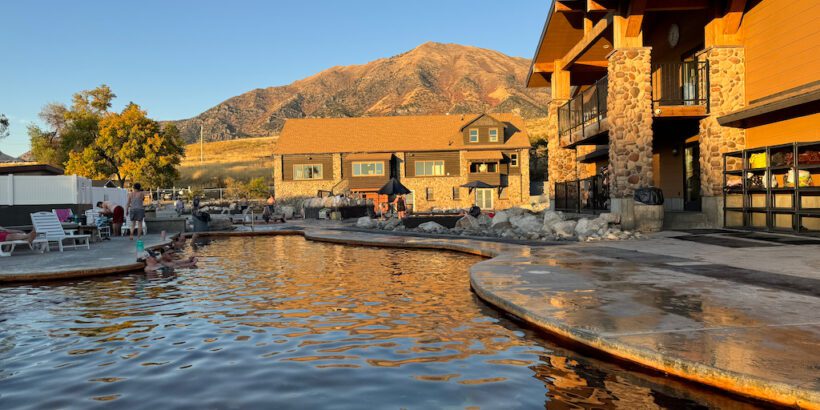It feels like I’ve been on a hot springs quest ever since leaving Hot Springs, Arkansas. I’ve soaked in springs across Oregon, Idaho, and now I had the chance to soak in Utah at the famous “Crystal Springs.”
These historic springs have been used by Native Americans for centuries, with the North Shoshone-Bannock being the last native people to call the springs home. Once a year, their tribe would return to the springs to gather, spend time together, and share stories of their ancestors. And presumably, warm up.
In more recent history, Chinese railroad workers sought the restorative powers of the springs, and during World War II, wounded soldiers were transported here for healing and recovery.
What truly sets these springs apart is their claim of being the most mineral-dense hot springs in the world. While that title may be up for debate (there’s always a debate with these titles, right?), there’s no denying their exceptionally high concentration of minerals—something you’ll definitely notice when you visit.
The website provides a detailed breakdown of all the different minerals found in the springs, and it’s an impressively extensive list. Some unexpected minerals even make an appearance, like silver.
Here’s a breakdown:
- Sulfate – 0.411 mg/l
- Calcium – 826 mg/l
- Chloride – 21,700 mg/l
- Fluoride – 1.15 mg/l
- Iron – 0.41 mg/l
- Lithium – 11.9 mg/l
- Magnesium – 197 mg/l
- Manganese – 0.019 mg/l
- Potassium – 675 mg/l
- Silver – 0.0075 mg/l
- Sodium – 15,200 mg/l
- Strontium – 25.3 mg/l
Another fascinating aspect of this place is that there’s a cold spring just 50 feet away from the hot spring. In fact, this is the second closest hot and cold spring in the world, which is pretty cool!
We arrived about an hour before sunset on a Wednesday afternoon, and I was a bit surprised by how busy it already was. It seems to be a popular (albeit polarizing) attraction in the region, especially as the temperatures start to cool down in the evening.

We didn’t make reservations (I’m not even sure you can), and simply purchased our entry for $18 per adult. I tend to agree with other that the price is a bit on the expensive side. This felt more like a $12 attraction, especially when I compare it to my experience at Lava Hot Springs which was much cheaper.
Anyway, we headed to the changing room, which was fairly spacious with showers, changing stalls, and hooks. However, I noticed the row of lockers outside the lockerroom didn’t have any keys. I’m not sure if that’s standard or not but it makes it difficult to protect your belongings, unlike Lava Hot Springs.
The complex features three pools and three hot tubs. The largest is an Olympic-sized pool, which I believe is fed by the cold spring or possibly a mix of hot and cold water, as the temperature was quite mild—around 98º.
We didn’t spend much time in the pool since we were looking for something warmer, so we headed to the soaking pool. This shallow pool is about two feet deep, perfect for sitting or floating.
I immediately noticed how the water had extra buoyancy due to the rich minerals, it almost carries you away. If you happen to get any of the water in your mouth, it definitely has a salty taste. Personally, I thought it was kind of cool. It sort of validates that there’s a ton of minerals in here!
The pool features a really cool cave water element with a waterfall, creating a relaxing atmosphere.
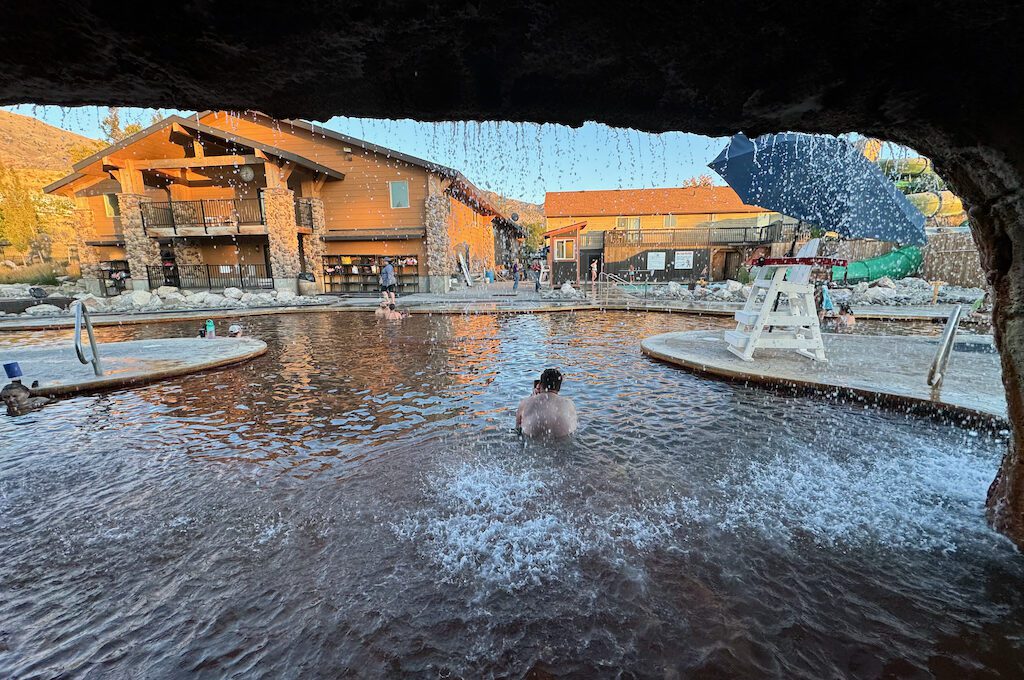
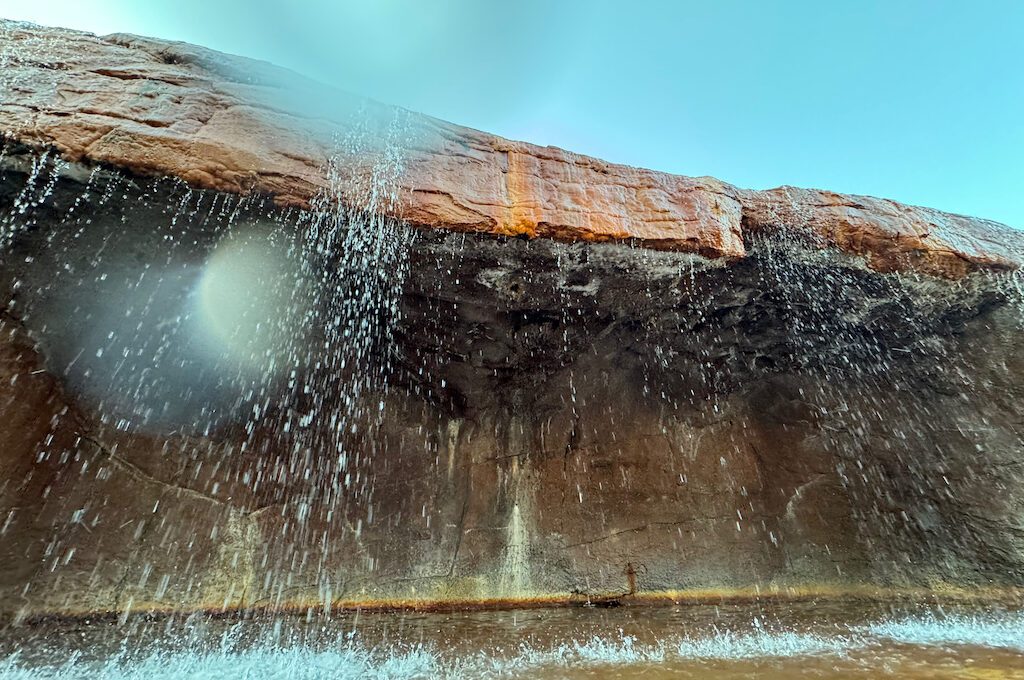
However, it’s such a family-friendly place that there were tons of kids around, making it a bit challenging to fully unwind in peace.
Speaking of kids, there are two waterslides that are 365 feet long. They run hot spring water on the steps to keep them warm, while the water flowing through the slides is chlorinated. The slides looked fun, but they also seemed fairly level, which made me doubt my ability to zip down them — I wasn’t about to get stuck! I think you need to pay a few extra bucks for the privilege of riding the slide.
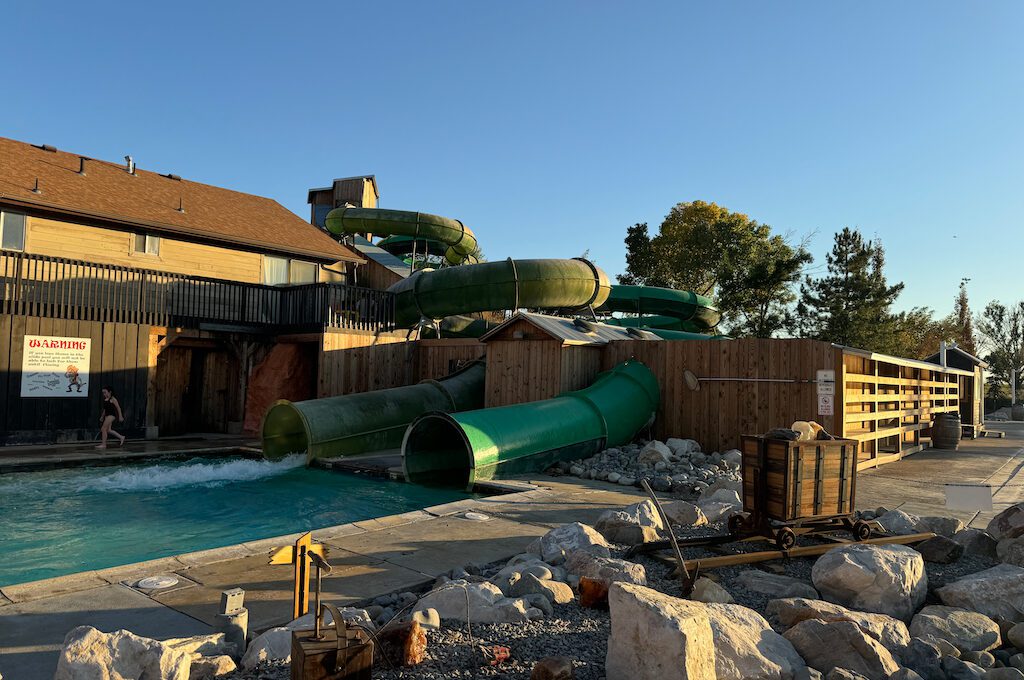
After spending some time in the soaking pool, we made our way to one of the hot tubs, which was about 104°. Compared to the hottest pools we visited at Idaho Springs, which reached 112°, these felt much more comfortable.

I then decided to take the plunge into the cold pool, and while I heard varying temperatures—some said it was 70° and others claimed it was 75°—it definitely felt closer to 70°, especially after warming up in the hot tub.
It was my first time experiencing contrast hydrotherapy, and I honestly enjoyed it. It’s worth noting, though, that this pool is chlorinated.
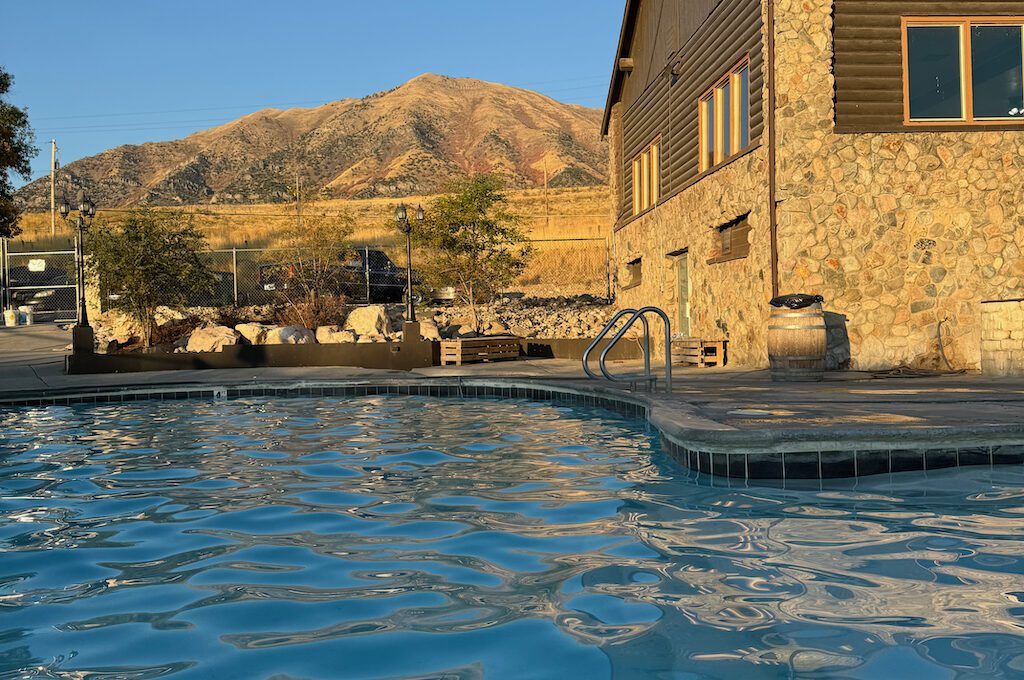
It was honestly one of my favorite parts of the experience because it’s a great way to cool down. Even after spending a couple of hours there, I didn’t feel nearly as drained as I did at Lava Hot Springs.
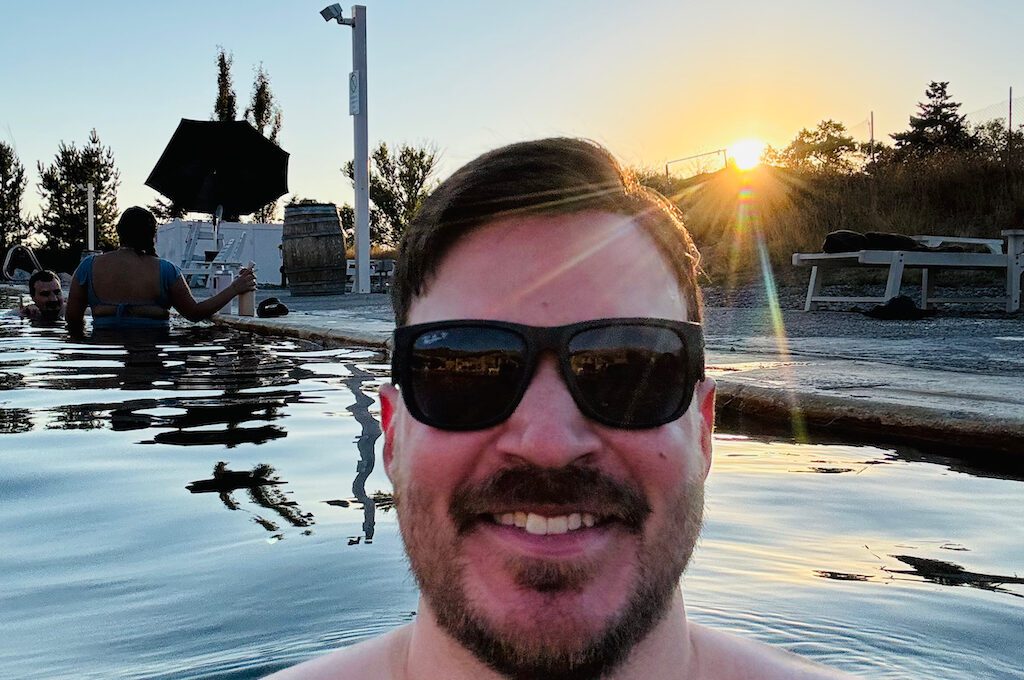
I also appreciated that this place stays open pretty late, typically from 10 PM to 11 PM, depending on the day of the week.
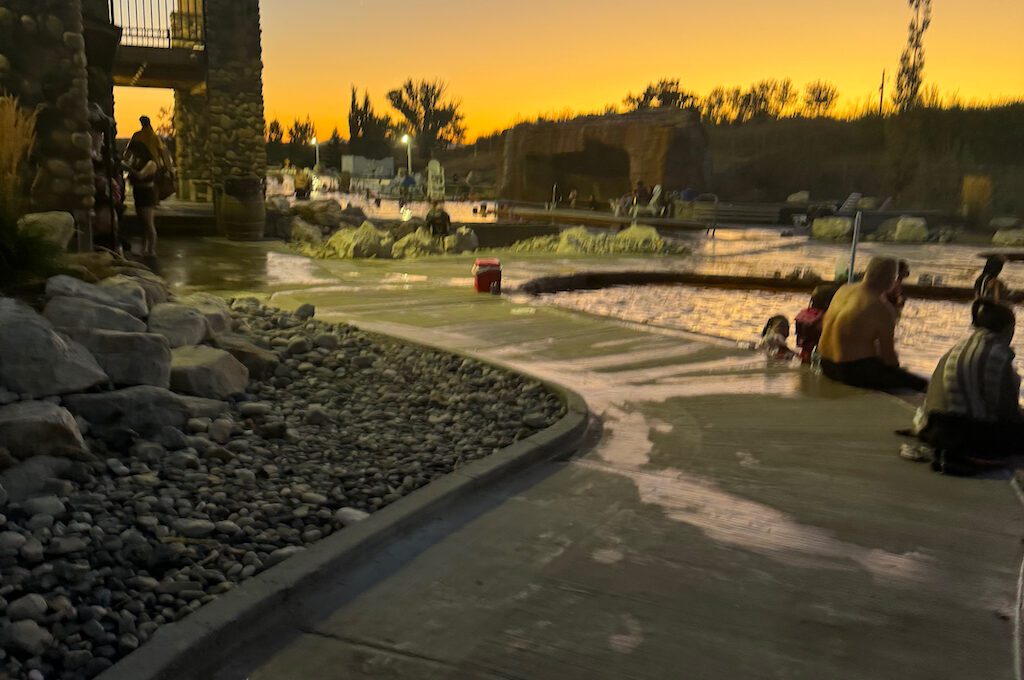
Overall, I thought this place was worth visiting, especially since we were only 30 minutes away in Logan, Utah. However, it’s definitely more of a family-oriented location. If you’re seeking a cool and calm, relaxing hot spring experience, you might have a harder time achieving that—perhaps only during the week when school is in session. Despite this, I still believe it’s worth experiencing the rich, mineral-dense water.
Daniel Gillaspia is the Founder of UponArriving.com and the credit card app, WalletFlo. He is a former attorney turned travel expert covering destinations along with TSA, airline, and hotel policies. Since 2014, his content has been featured in publications such as National Geographic, Smithsonian Magazine, and CNBC. Read my bio.

